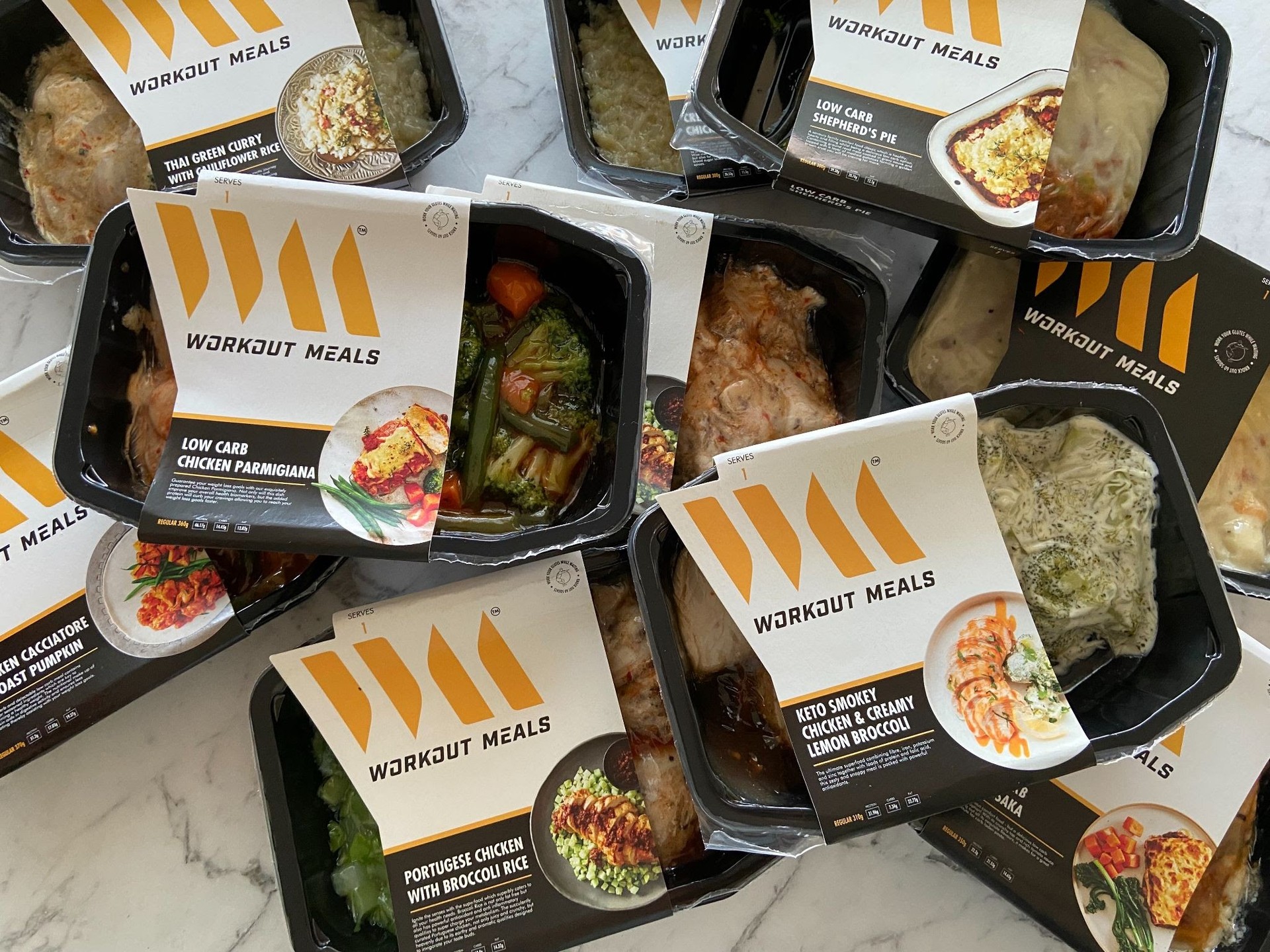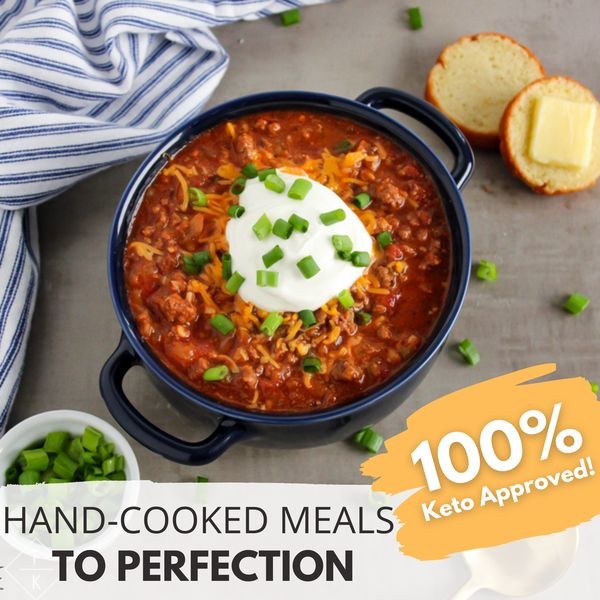Adopting a high-protein diet is a great way to propel your fitness journey forward.
Research has, in fact, shown that a high-protein diet can help support various wellness and fitness goals, including weight loss, fat loss, and muscle gain [1, 2].
That’s no surprise since a high-protein diet is known to help maintain satiety, keeping you full for longer. Additionally, consuming more protein may boost your metabolism and help improve appetite control and regulation [1].
Including more proteins in your meal can feel a little tricky at first, especially if you’re trying to keep within a specific calorie restriction limit. But meal planning and prepping ahead of time can help reduce the stress of putting together high-protein meals on the spot.
In this guide, you’ll learn how to calculate your daily protein intake goals. This guide also covers some meal-prepping tips and a sample high-protein meal plan to help you get started.
Let’s dive right in!
Calculating How Much Protein You Need
There aren’t any universally-accepted guidelines that specify the amount of protein you need to consume on a high-protein diet. Nonetheless, consuming protein in excess isn’t going to be helpful and could even have detrimental effects on your health in the long run.
So where’s the sweet spot, then?
Let’s first take a look at some health guidelines that are already in place.
According to the Australian Dietary Guidelines, the estimated Acceptable Macronutrient Distribution Ranges (AMDR) associated with a reduced risk of chronic disease for the general population are as follows [3]:
- Protein: 15-25% of your total energy intake
- Carbohydrates: 45-65% of your total energy intake
- Fats: 20-35% of your total energy intake
In this case, a good place to start for a high-protein diet would be to consume enough proteins each day to meet 20-25% of your total energy requirements. Some people may even consume up to 30% of their total energy intake as protein.
One gram of protein delivers around 4 calories. So a 2000-calorie high-protein diet might look like consuming 100 grams of protein per day.
Another way to calculate your protein intake goals is to use your body weight. Based on the Dietary Reference Intake report for macronutrients, the current recommendation for protein requirements in adults is 0.8g/kg each day.
However, many experts agree that this amount of protein might not be sufficient for all population groups. Furthermore, research has found that diets providing between 1.2 and 1.6 grams of protein per kg each day were associated with improvements in appetite, body weight management, and risk factors related to heart disease.
In other words, you should generally consume at least 0.8 grams of protein per kg each day, but you may consume up to 1.6 grams of protein per day to reap the benefits of a high-protein diet.
So, for instance, if you weigh 65kg, a high-protein diet may look like consuming a total of 100 grams of protein each day.
Of course, it’s best to seek the advice of your dietitian, nutritionist, or doctor before making any drastic changes to your diet.
What About Calories and Other Macronutrients?
Again, there are no specific guidelines detailing the number of calories to consume on a high-protein diet, and the same goes for other macronutrients, such as fats and carbs.
Your daily calorie requirement will differ based on various factors, such as your body weight, lifestyle, and age.
The Australian Dietary Guidelines do provide a general guide on how much carbs and fats you should include in your diet. Based on these guidelines, 45-65% of your total energy intake should be derived from carbohydrates, while 20-35% of your total energy intake should come from fats [3].
Here’s an example of the daily macronutrient breakdown for a 2000-calorie, high-protein diet.
- Protein: 400 calories or ~100 grams of protein (20% of total calories)
- Carbs: 1100 calories or ~275 grams of carbs (55% of total calories)
- Fat: 500 calories or ~55 grams of fat (25% of total calories)
You can adjust this ratio based on your wellness goals and what works for you.
Let’s take a look at a sample meal plan in the next section.
5-Day High-Protein Meal Plan: A Guide to Get You Started
Here are some sample meal plans that span a total of 5 days. Each daily meal plan provides about 100 grams of protein per day.
Day 1:
Breakfast:
- Smoked salmon sandwich (2 oz Smoked salmon, 2 tablespoons non-fat Greek yogurt, 2 slices of whole-grain bread, baby greens, sliced tomatoes )
- Protein per serving: ~23 grams
Lunch:
- Chicken salad (90g of cooked chicken breast, 2 tablespoons Greek yoghurt, diced apples, sliced seedless grapes, diced celery, seasonings)
- Protein per serving: ~38 grams
Snack:
- Apple slices with 2 tablespoons of almond butter
- Protein per serving: ~7 grams
Dinner:
- High-protein chicken alfredo (150g thinly-sliced chicken breast, olive oil, Laughing Cow cheese, parmesan cheese, low-fat milk, herb and spices)
- Protein per serving: ~28 grams
Day 2:
Breakfast:
- High-protein tuna sandwich (60g canned tuna, 2 tablespoons Greek yoghurt, diced cucumbers, chopped olives, chopped dill)
- Protein: ~25 grams
Lunch:
- Low-calorie beef crunch wrap (120g lean minced beef, 1 low-carb wrap, 1 serving light cheese, 1/2 diced tomato, onion, baby spinach)
- Protein per serving: ~30 grams
Snack:
- Peanut butter and banana oatmeal (rolled oats, a small sliced banana, a tablespoon of peanut butter, chopped almonds, chia seeds)
- Protein per serving: ~10 grams
Dinner:
- Low-calorie creamy chicken (150g raw chicken breast, chopped spinach, low-fat milk, Laughing Cow cheese, mozzarella cheese, a carb such as sweet potato or brown rice) with stir-fry veggies
- Protein per serving: ~38 grams
Day 3:
Breakfast
- Cottage Cheese Breakfast Bowl (1/2 cup cottage cheese, 2 tablespoons Greek yoghurt, toppings of your choice, such as blueberries, chia seeds, or chopped almonds)
- Protein per serving: ~23 grams
Lunch
- Turkey taco lettuce wrap (120g seasoned and cooked lean ground turkey, large lettuce leaves, onions, diced tomatoes, bell pepper)
- Protein per serving: ~30 grams
Snack
- A large boiled egg with salt and pepper
- Protein per egg: ~6 grams
Dinner
- Chicken burrito bowl (150g chicken breast, 35g Greek yoghurt, Mexican-style rice, diced tomatoes, white onion, corn, black beans, and seasonings)
- Protein per serving: ~41 grams
Day 4:
Breakfast
- Banana protein smoothie (1/2 cup plain Greek yoghurt, 1 banana, 2 tablespoons almond butter, 1 scoop vanilla protein powder, chia seeds, water)
- Protein per serving: ~40 grams
Lunch
- Chickpea salad (150g chickpeas, cherry tomatoes, chopped onions, sliced avocado, sliced cucumber, 40g feta cheese, olive oil)
- Protein per serving: ~35 grams
Snack
- Chia pudding (2 tablespoons chia seeds, half cup almond milk, honey or sweetener of choice)
- Protein per serving: ~5 grams
Dinner
- Lemon chicken breast with rice (120g chicken breast, rice, reduced salt chicken stock, lemon, and seasonings)
- Protein per serving: ~27 grams
Day 5:
Breakfast:
- Cottage cheese toast (1/2 cup low-fat cottage cheese, 2 slices of toasted whole-grain bread, sliced tomatoes, sliced avocado, red onion, seasonings)
- Protein per serving: ~25g
Lunch:
- High Protein Nandos Wrap (100g chicken breast, 75g cottage cheese, salad, seasoning)
- Protein per serving: ~33g
Snack:
- 1/4 cup of pumpkin seeds
- Protein per serving: ~6 grams
Dinner:
- Salmon fillet with asparagus, potatoes, and garlic butter sauce
- Protein per serving: ~36 grams
Vegan Options for a High-Protein Meal Plan
Some high-protein vegan foods you can incorporate into a vegan diet include the following plant-based protein sources:
- Lentils, chickpeas, and beans
- Almonds, pistachios, and other nuts
- Pumpkin seeds, chia seeds, and other seeds
- Edamame
- Quinoa
- Tofu
- Oats
It’s important to vary your sources of protein to ensure you get all the amino acids and nutrients your body needs.
For instance, chickpeas contain all the essential amino acids you need except for methionine. On the other hand, quinoa delivers a decent amount of the amino acid methionine, making it a great complementary protein source to cereals and legumes.
How to Create Your Own High-Protein Meal Plan
In order to create a high-protein meal plan, you would first have to calculate your daily protein and calorie requirements.
As a very general guide, a healthy adult requires about 8700 kilojoules (kJ), or around 2080 calories per day, to maintain a healthy weight [4].
If you’re aiming to lose weight, a good starting point to consider might be aiming for a calorie deficit of 500 calories per day. In general, this looks like consuming ~1500 calories per day.
Once you know how many calories you need each day, you can then find out how many grams of protein you’ll need to fulfil 20-25% of your daily energy intake. One gram of protein contains around 4 calories.
Ater that, you can then determine the breakdown ratio for carbs (45-65% of your total energy intake) and fats (20-35% of your total energy intake).
Once you have a macronutrient ratio and daily protein intake goal in mind, you can begin planning and prepping your daily meals to fit into these targets.
Some of the best and healthiest high-protein foods to incorporate into your diet include lean proteins such as chicken breast and turkey breast. Other high-quality sources of protein include salmon, quinoa, nuts, seeds, and dairy products such as Greek yoghurt, cottage cheese, and milk.
You can also check out our comprehensive list of the top high-protein foods and high-protein snacks for more ideas.
It’s best to consult your dietitian or nutritionist before significantly changing your diet. They will also be able to provide personalized advice on how much protein, carbs, and fats to consume to meet your wellness goals.
Tips to Get Started on High-Protein Meal Prepping
When creating your own high-protein meal plan, here are some other tips to keep in mind:
- Try to spread your protein intake across the day. This allows your body to utilize protein more effectively.
- Make sure to include different protein sources in your diet. This helps you get all the essential amino acids you need.
- Opt for high-quality sources of proteins that aren’t saturated with unhealthy fats or sugars. One good example is lean meat, such as chicken breast.
- Avoid highly-processed, high-sodium meats, such as ham, sausages, bacon, and salami.
- It’s important to ensure you get enough healthy fats, carbs, and fibre while on a high-protein diet.
- You can meal prep for more than one day at once. Most foods can be stored in the freezer for five days, and sometimes more.
The Best High-Protein Meal Plans
The best high-protein meal plans are those that provide your body with the fuel and nutrients it needs to thrive. Finding what works for you and your lifestyle may take some experimentation and time. It’s also best to plan in advance if you’re eager to start a high-protein diet.
You may bulk-prep your high-protein meals for the week to save time. Or you can marinate a larger batch of chicken to store in the freezer for use sometime later in the month. Other simple ways to incorporate protein into your snacks and meals include adding a scoop of protein into your breakfast smoothie or changing up your usual veggie dip with Greek yoghurt.
If you’re looking for a convenient and time-saving way to enjoy high-protein and healthy meals each day, you can look into getting ready-made meals delivered to your doorstep.
Some of the top meal service providers offering high-protein meals include:
Check out our review on the best meal providers for bodybuilders and the best meal providers for weight loss to learn more.


